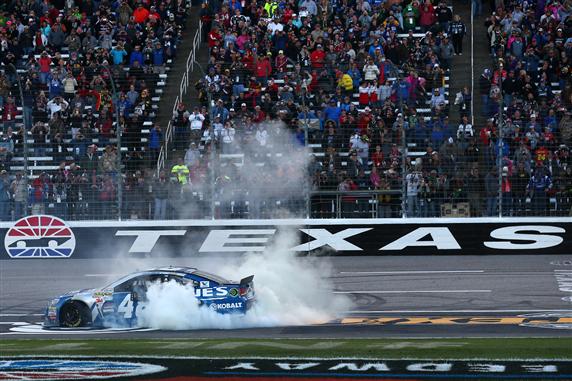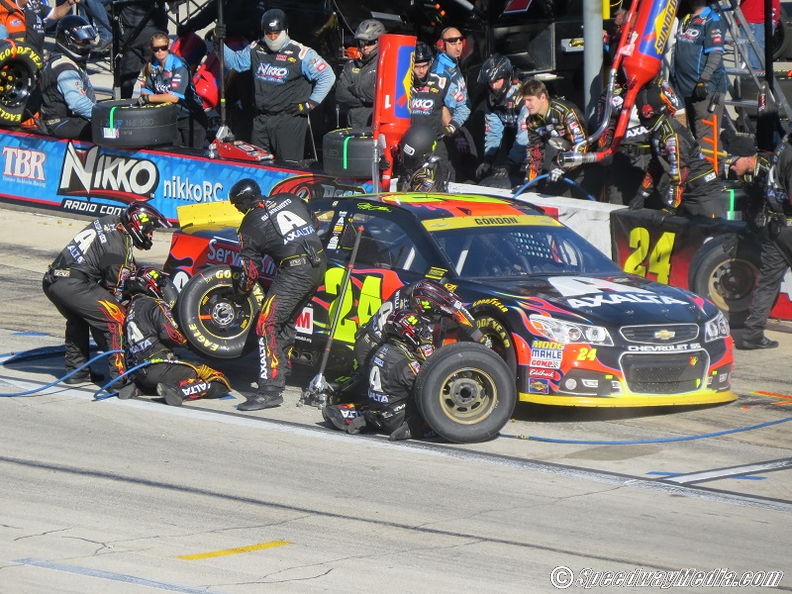“The white-zone is for immediate loading and unloading…” and I need to unload about the amount of night races on the NASCAR rotation.
I was listening to Mike Bagley and Pete Pistone on The Morning Drive today and they brought up a story in the New Hampshire Union Leader about David McGrath – general manager of New Hampshire Motor Speedway – wanting to add lights to the 1.058-mile speedway in Loudon, N.H.
Here’s a taste of what McGrath said, “Lights is certainly something that we’re always going to be looking at. I know the fans want that, and we owe it to the fans to explore that to the furthest extent that we can. It’s a deep exploration, a process we are undertaking. We are looking at it, exploring it, giving it the due diligence that it requires.”
While I believe all tracks should have lights so we’re not constrained by sunset like we almost were at Martinsville, we have far too many night races.
Once upon a time, there were just two night races on the Cup schedule; at the old Nashville Fairgrounds and Bristol Motor Speedway. After the fairground fell off the schedule, it was just Bristol.
In 1988, Richmond began hosting one night race every season when Musco Lighting trucks lit up the then Richmond Fairgrounds Raceway.
Now night racing wasn’t a foreign concept at the time, but the lights at most local tracks weren’t all that great. Even at Bristol, the track at night was lit rather poorly by today’s standards. It was “One Hot Night” that changed the very concept of night racing forever.
In 1992, the madmen Bruton Smith and Humpy Wheeler had the crazy idea to install over 1,000 lights at the cost of nearly $2 million. The end result was one of the most dramatic finishes to the All-Star Race. Dale Earnhardt gets turned on the backstretch leading the race. This left it to be settled by Davey Allison and Kyle Petty. The former won in a dead heat but celebrated victory in the hospital after a brutal crash past the start/finish line.
So next season, the Coca-Cola 600 was adjusted from running at the same time as the Indianapolis 500 to a race that starts in the evening and ends at night. It was The Intimidator that found himself standing in victory lane.
In 1998, Musco created the largest permanent outdoor sports lighting project in the world when lights were added to the 2.5-mile Daytona International Speedway.
While racing at night was nothing new at the world center of racing with the Rolex 24, there had never been a restrictor plate race at night.
The race was scheduled to be run on Independence Day 1998, but it was postponed to late in the season as central Florida was dealing with raging wildfires.
NASCAR had waited until the 11th hour before finally making the decision to postpone the race on July 2. I’m not being hyperbolic when I say the 11th hour. The teams had made the trek down to Daytona Beach and were scheduled to practice on the day the decision was made.
The race was finally run on Oct. 17, 1998. Being late in the season, 30th of 33, the win by Jeff Gordon was his 11th of the season and also made it that more difficult for Mark Martin to gain ground in the title hunt. One last nugget of interest from this race is that this was the first and only time in NASCAR history in which the sport ran back to back restrictor plate races. This race comes only six days after Dale Jarrett won at Talladega. I can only imagine what havoc this would play in the Chase if this were to happen again.
But I digress.
Where the night racing spiraled out of control was around 2005 when start times were being adjusted so that races would end at night. This was most evident with the Daytona 500. It went from starting at noon or 1:00 p.m. to starting at 3:00 or later. From 2006 to 2015, the Daytona 500 ended during the day only three times. Now granted it was the track surface in 2010 and weather in 2012 and 2014 that caused those night endings, but, combined with running the Sprint Unlimited and Duel races at night, it ruined the luster of night racing at the world center of racing.
It also didn’t help that night races were being held at tracks that didn’t put on good racing like Auto Club (prior to 2011), Chicagoland (prior to 2011), Texas (still) and Kentucky prior to this season.
This season alone, we were scheduled to run 10 points races at night. That’s more than a quarter of the schedule. Even with Richmond in April and Charlotte in October being moved to Sunday afternoon because of rain, 22 percent of the schedule was at night.
Personally, I’d reduce the schedule to five night races. It would start with the Sprint Unlimited returning to Sunday afternoon the week before the Daytona 500. Qualifying would return to Saturday afternoon the week before the Daytona 500. I’d leave the Duel races in place because it’s much more convenient for the viewers than having to “call in sick” that Thursday afternoon.
Instead of running Kansas on Saturday night on Mother’s Day weekend, I’d move it to Saturday afternoon.
I’d leave the All-Star Race at night, but run it the Wednesday before the Coca-Cola 600. The Coca-Cola 600 would remain on Sunday evening and be the first points night race of the season.
The next night race would be Independence Day weekend at Daytona International Speedway. While I’d be all for putting this race on Sunday night, I think it would work best on Saturday night. The other three night races would be three in a row with Bristol, Darlington and Richmond.
Every other race should be run on Sunday afternoon. I feel that by reducing the number of night races to five, that would restore the luster of racing under the lights.
My plane is about to take off, so I must wrap this up. Until next time, I’ll leave you with this fact. On a Canadian $2 bill, the American flag is flying over the Parliament Building.










I AGREE WITH YOU ON JUST 5 NIGHT RACES BUT START THEM AT 630 AND WE OLD PEOPLE CAN COME TO THE RACES THEY START THEM TO LATE
THANK YOU FOR YOUR COMMENT